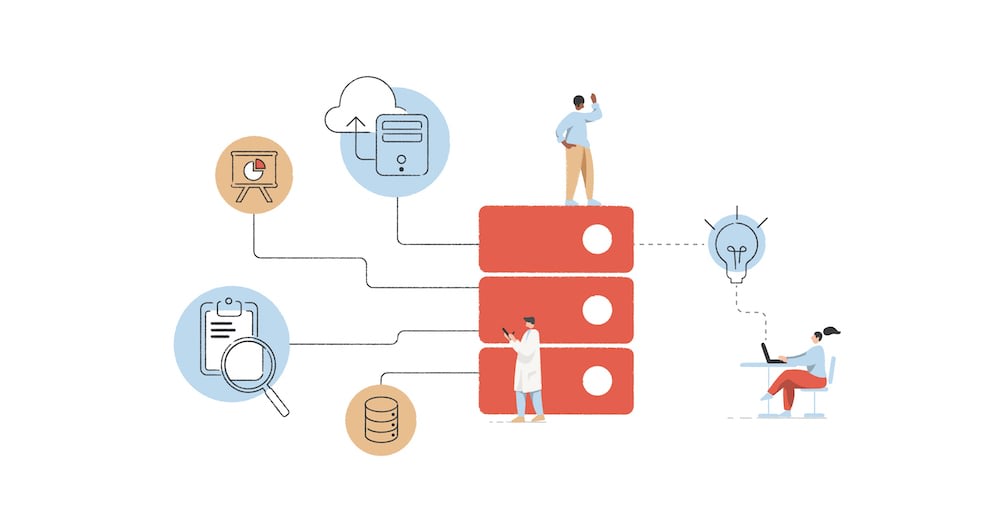Data
Apr 15, 2021
Understanding data and analytics maturity: A focus on TOM and Data Platforms

Building on our recent article’s focus on culture and DataOps practices, this article will focus on the vitally important aspects of ‘Target Operating Models’ and ‘Platforms’ in successful transformations.

Target Operating Models
Target Operating Models (TOMs) ensure that changes to an organisation’s culture, capabilities, and practices are aligned to the data & analytics strategy and help to support better business decisions through the delivery of new products and services. This may include strong central capabilities to maintain best practices, manage ‘single sources of truth', and support the business in delivering data & analytics.
The contents of a TOM will vary across organisations, but we have typically seen that effective data & analytics TOMs need to feature at least some of the following components:
Vision and goals: Success factors to define the outcomes of the TOM.
Capability model: The required capability model, often expressed against user stories.
Processes: The processes to manage data platforms and operationalise analytics.
Governance: The governance model required to ensure compliance and business alignment.
Architecture: The data and platforms architecture that will support data & analytics products.
Modern enterprises need a modern TOM
Modern enterprises are being completely transformed as advancements in Cloud and application architecture drive new paradigms for data, enabling new business models. Leading organisations are making use of AI to upend traditional business models by instantly deploying serverless Cloud platforms that enable faster time to market for their solutions and more agility in their development.
Additionally, analytics users are demanding more seamless deployment tools, APIs to expose data, and the ability to rapidly generate new insights from data. All of this is enabled by new models of architecture such as Data Mesh, new delivery models such as DataOps, and new governance models that allow the business to extract value from data at greater scale.
For this reason, organisations may require a new TOM for data & analytics. To allow the organisation to shift away from divisions to ‘communities’ and encourage a multi-disciplinary delivery model, new ways of working will need to be supported by appropriate governance and oversight capabilities. Your TOM will need to define the practical elements of this and help to establish the roles and responsibilities that are required.
TOMs set the standard for how things should be done, but it is worth noting that static operating models are a thing of the past. The pace of change has increased exponentially, and so operating models need to be iteratively refined to ensure that organisations can continue to innovate.
Empowering your workforce
Empowering your colleagues to access and use data through greater levels of data literacy will address any critical skills gaps and enable digital transformation. Use your TOM to reinforce your data culture and allow people to find the right data to exploit new opportunities that will make their area of the business more intelligent.
With the current shortage of qualified data scientists, architects, and engineers, it is important to provide your organisation with ways to naturally upskill and develop citizen data specialists. Your TOM can catalyse innovation against measurable success factors by providing your organisation with the access to data and supporting capabilities needed to encourage experimentation.
Agile, flexible data platforms
Cloud is the most disruptive driver of new data architectures, as it offers a way to rapidly scale capabilities to source, deploy, and run data infrastructure platforms & applications.
When defining data platforms, it is important to strike a balance between accessibility, control, and agility. This will help to ensure that business functions remain accountable for delivering the solutions that they need whilst having sufficient oversight and control over the use of Cloud resources and their implementation.
In particular, there are two trends that are changing the way data platforms are designed:
Serverless solutions such as Google BigQuery allow organisations to build and operate data-centric applications with infinite scale and without the hassle of installing and configuring infrastructure as the service scales itself to demand. Serverless options have lowered the expertise, cost, and time required to build, test, and deploy new solutions, whilst having virtually no operational overhead required to sustain them.
Containerisation solutions like Kubernetes enable organisations to decouple and automate deployment of additional compute power and data-storage systems. This is particularly valuable in ensuring that complex solutions can retain data between sessions and ensures recoverability.
Modern data architectures
In recent times, the Data Mesh has emerged as a new paradigm for managing organisational data in a way that enables the end-to-end delivery of analytical solutions from within the business, as well as to move the organisation towards a non- monolithic ‘data as a product’ orientated architecture.
In summary, the Data Mesh decentralises the enterprise’s data architecture to allow business-led, domain-oriented teams to build end-to-end data & analytics products around acute business needs via modern delivery and governance models, as well as a “data as a product” approach to end users.
When moving to these modern architectural paradigms, greater consistency in how data is managed and used becomes increasingly more important. We recommend focusing on democratising access to data and ensuring that all data has clear ownership and lifecycle management, cataloguing tools and metadata repositories to provide discovery capabilities and simplify access to data assets.
In addition, the Data Mesh also requires an ‘infrastructure as a service’ approach to data platforms, speeding up access to secured & managed infrastructure while abstracting away technical complexities from the end user through virtualisation. In this way, enterprise data can be used in the best possible way by a business-led team using technology that is optimised for their use case.
Key takeaways
Understand the modern architectural, cultural, and organisational paradigms that will reshape your organisation, and how a new target operating model will enable this.
Consider how making data less restricted and siloed can help your organisation to develop greater data literacy by encouraging front-line experimentation with data assets.
Consider the types of data platforms, services, and partners needed and how your TOM will support the adoption of Data Mesh architectures and serverless technologies.
What to expect in our next article
In our next and penultimate instalment, we will be discussing the role of compliance in helping your organisation to achieve greater maturity in data & analytics in ways that doe not compromise your business.
If you have any questions about the topics discussed in this article or would like us to help you assess your data maturity, please get in touch with one of our experts.
Contact Us
Ready to achieve your vision? We're here to help.
We'd love to start a conversation. Fill out the form and we'll connect you with the right person.
Searching for a new career?
View job openings